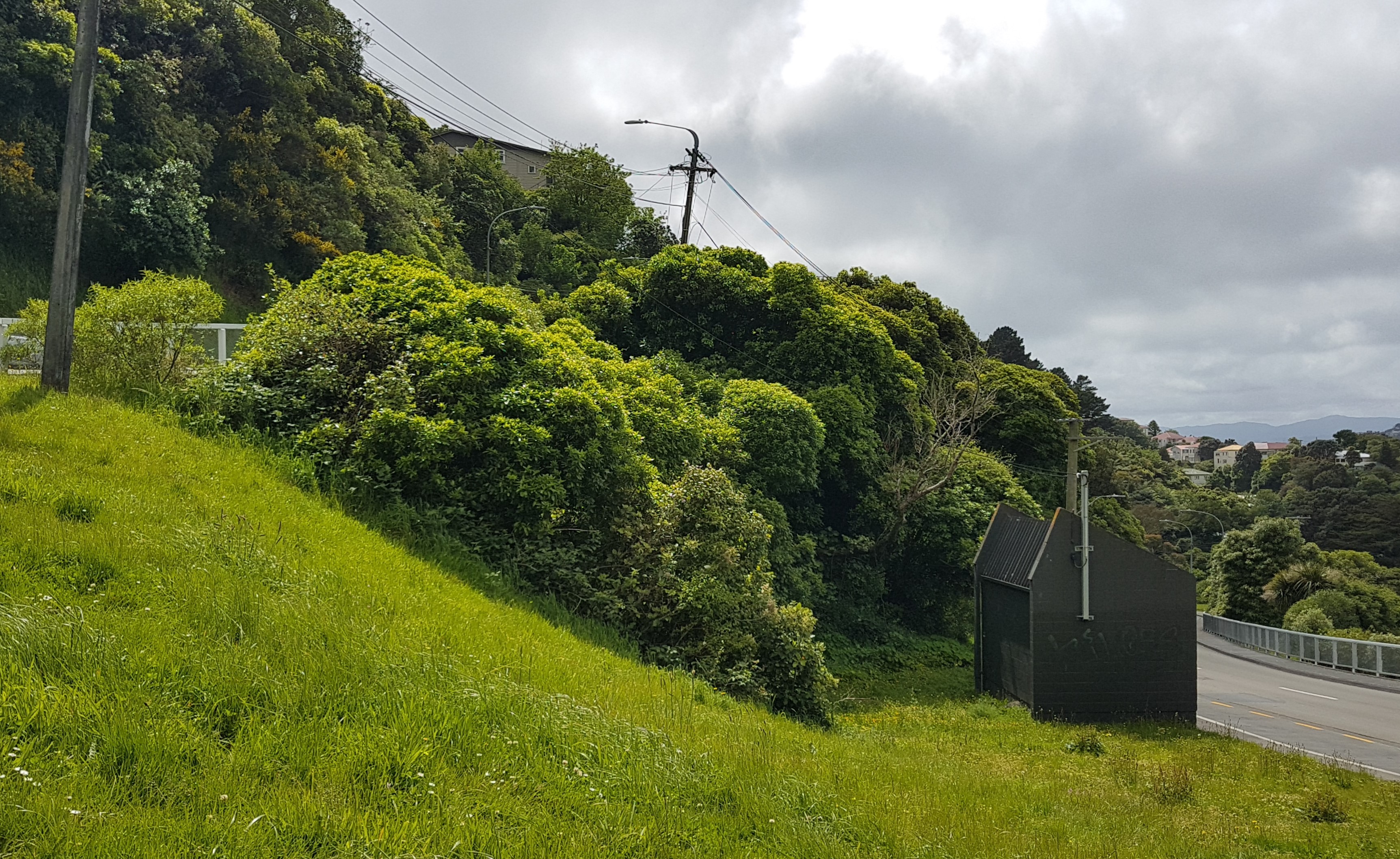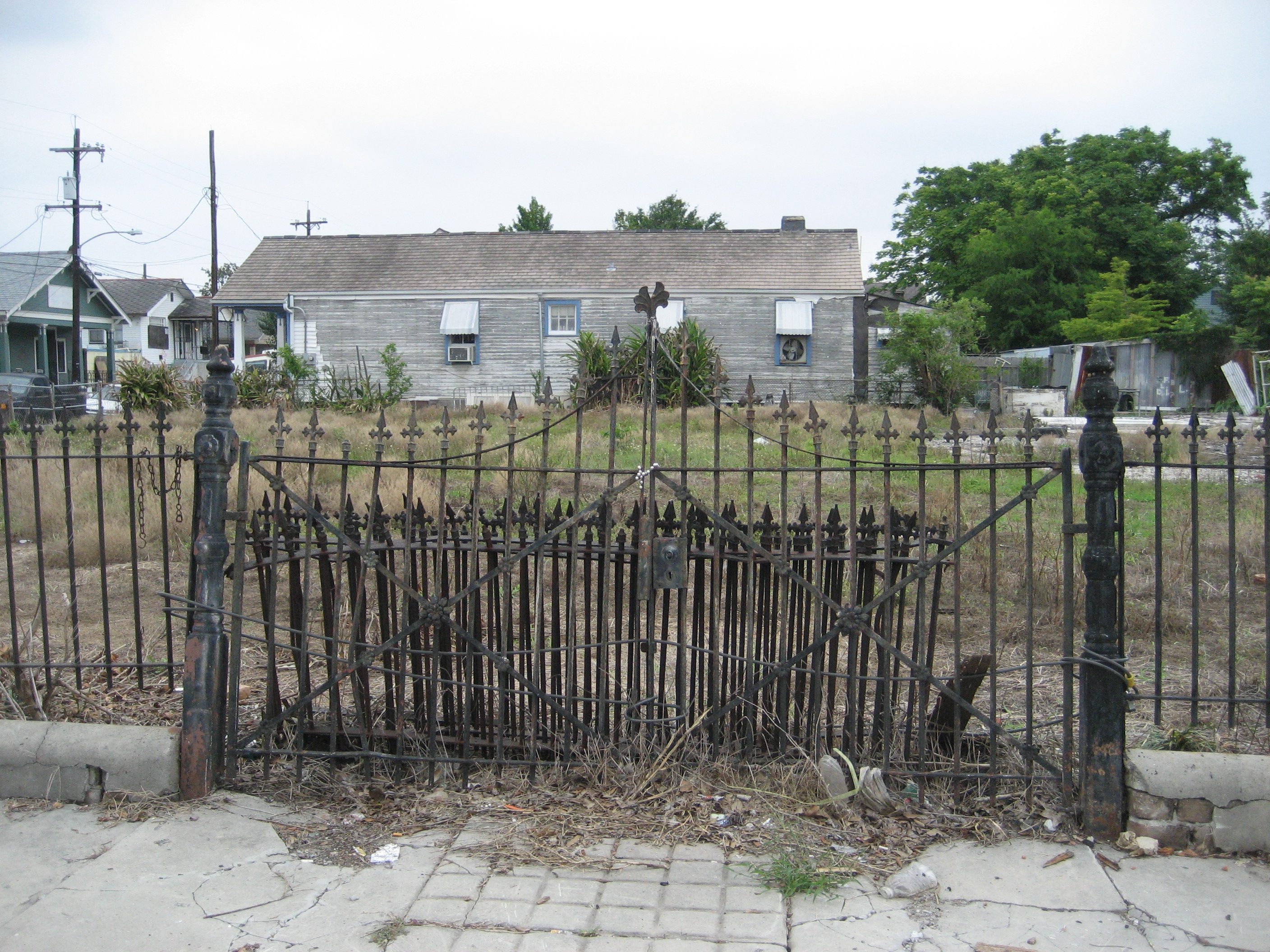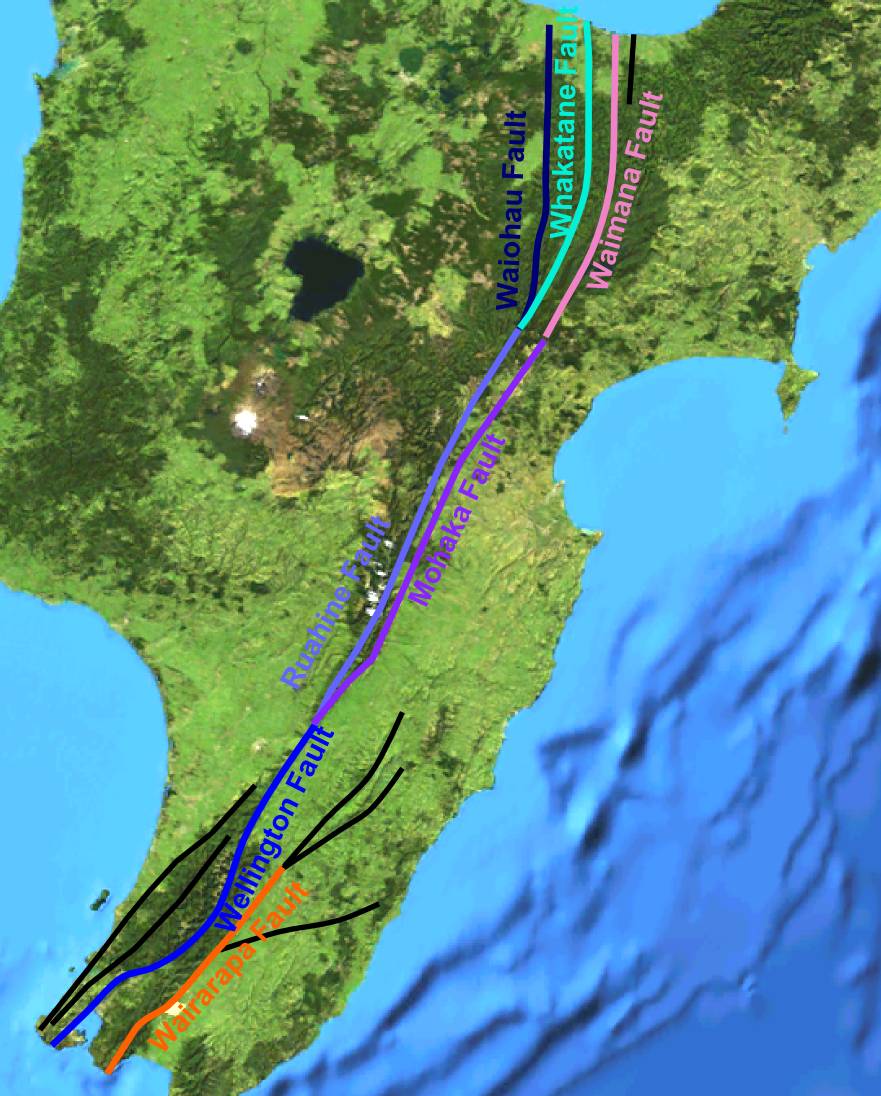|
Aro Valley
The Aro Valley forms a small inner-city suburb of Wellington in New Zealand. It takes its name from the stream which originally flowed where modern Epuni Street is. The stream's Māori name was originally Wai-Mapihi, but it was commonly called Te Aro Stream due to it running through the Te Aro flat. Geography The Aro Valley is 126 hectares running between the hills of Brooklyn to the south, and Kelburn to the north, with the area of Karori to the west and Te Aro, the city centre to the east. Much of Wellington consists of the remnants of an old peneplain, a flat expanse that rose from the sea about 20 million years ago. This land was heavily dissected by watercourses from that time and today the tops of the hills around Wellington indicate the general height of that eroded peneplain. During this time massive faults appeared that are still active today. Aro Valley formed from fault activity. One kilometre to the west of Aro Valley is the Wellington Fault running north-east a ... [...More Info...] [...Related Items...] OR: [Wikipedia] [Google] [Baidu] |
Wellington City
Wellington City Council is a territorial authority in New Zealand, governing the country's capital city Wellington, and ''de facto'' second-largest city (if the commonly considered parts of Wellington, the Upper Hutt, Porirua, Lower Hutt and often the Kapiti Coast, are taken into account; these, however have independent councils rather than a supercity governance like Auckland, and so Wellington City is legally only third-largest city by population, behind Auckland and Christchurch). It consists of the central historic town and certain additional areas within the Wellington metropolitan area, extending as far north as Linden and covering rural areas such as Mākara and Ohariu. The city adjoins Porirua in the north and Hutt City in the north-east. It is one of nine territorial authorities in the Wellington Region. Wellington attained city status in 1886. The settlement had become the colonial capital and seat of government by 1865, replacing Auckland. Parliament officially ... [...More Info...] [...Related Items...] OR: [Wikipedia] [Google] [Baidu] |
Ngāti Ruanui
Ngāti Ruanui is a Māori iwi traditionally based in the Taranaki region of New Zealand. In the 2006 census, 7,035 people claimed affiliation to the iwi. However, most members now live outside the traditional areas of the iwi. History Early history Ruanui is acknowledged as the eponymous ancestor of the iwi. He was the son of Uenuku-puanake and Tāneroroa. Uenuku came from the ''Tākitimu'' canoe (although this is contested among Matauranga Maori historians), while Tāneroroa was the daughter of Turi, who came to New Zealand on the '' Aotea'' canoe. Turi originally landed in Aotea Harbour, but eventually settled along the Pātea River. Over time, Ruanui’s descendants spread across south Taranaki. Musket Wars Ngāti Ruanui was heavily involved in tribal wars during the 19th century. In 1816, the iwi was invaded from the north by Nga Puhi warriors carrying muskets. Over the next few decades, Ngati Ruanui would come under attack by Ngāti Toa, Ngāti Whātua and the Waikato t ... [...More Info...] [...Related Items...] OR: [Wikipedia] [Google] [Baidu] |
Town Planning
Urban planning, also known as town planning, city planning, regional planning, or rural planning, is a technical and political process that is focused on the development and design of land use and the built environment, including air, water, and the infrastructure passing into and out of urban areas, such as transportation, communications, and distribution networks and their accessibility. Traditionally, urban planning followed a top-down approach in master planning the physical layout of human settlements. The primary concern was the public welfare, which included considerations of efficiency, sanitation, protection and use of the environment, as well as effects of the master plans on the social and economic activities. Over time, urban planning has adopted a focus on the social and environmental bottom-lines that focus on planning as a tool to improve the health and well-being of people while maintaining sustainability standards. Sustainable development was added as one of ... [...More Info...] [...Related Items...] OR: [Wikipedia] [Google] [Baidu] |
Urban Renewal
Urban renewal (also called urban regeneration in the United Kingdom and urban redevelopment in the United States) is a program of land redevelopment often used to address urban decay in cities. Urban renewal involves the clearing out of blighted areas in inner cities to clear out slums and create opportunities for higher class housing, businesses, and other developments. A primary purpose of urban renewal is to restore economic viability to a given area by attracting external private and public investment and by encouraging business start-ups and survival. It is controversial for its eventual displacement and destabilization of low-income residents, including African Americans and other marginalized groups. Historical origins Modern attempts at renewal began in the late 19th century in developed nations, and experienced an intense phase in the late 1940s under the rubric of reconstruction. The process has had a major impact on many urban landscapes and has played an impo ... [...More Info...] [...Related Items...] OR: [Wikipedia] [Google] [Baidu] |
The Dominion Post (Wellington)
''The Dominion Post'' is a metropolitan daily newspaper published in Wellington, New Zealand. It is owned by media business Stuff Ltd, formerly the New Zealand branch of Australian media company Fairfax Media. Weekday issues are now in tabloid format, and its Saturday edition is in broadsheet format. Since 2020 the editor has been Anna Fifield. History ''The Dominion Post'' was created in July 2002 when Independent Newspapers Limited (INL) amalgamated two Wellington printed and published metropolitan broadsheet newspapers, ''The Evening Post'', an evening paper first published on 8 February 1865, and '' The Dominion'', a morning paper first published on Dominion Day, 26 September 1907. ''The Dominion'' was distributed throughout the lower half of the North Island, as far as Taupo, where it met with Auckland's ambitiously named ''The New Zealand Herald''. ''The Evening Post'' was not so widely distributed, but had a much greater circulation than ''The Dominion''. INL so ... [...More Info...] [...Related Items...] OR: [Wikipedia] [Google] [Baidu] |
Wellington Railway Station
Wellington railway station, or Wellington Central station, is the main railway station serving Wellington, New Zealand, and is the southern terminus of the North Island Main Trunk, Wairarapa Line and Johnsonville Line. The station opened in June 1937, replacing the two previous Wellington termini, Lambton and Thorndon. History Development The capital's first Wellington railway station was a group of small buildings at Pipitea Point built in 1874 on earthquake-raised harbour floor for a temporary terminus of the railway line to the Hutt Valley. A series of reclamations allowed the line to reach well down Featherston Street and in 1880 a new Wellington railway station was, as it turned out, temporarily placed near the goods station for the new Railway Wharf. Traffic at the wharf quickly grew beyond expectations. The 1880 building was pulled north on rollers in 1885 to a less congested site on Featherston Street opposite the junction of Mulgrave Street and Sydney Str ... [...More Info...] [...Related Items...] OR: [Wikipedia] [Google] [Baidu] |
Wellington Tramway System
The Wellington tramway system (1878–1964) operated in Wellington, the capital of New Zealand. The tramways were originally owned by a private company, but were purchased by the city and formed a major part of the city's transport system. Trams Initially in 1878, Wellington's trams were steam-powered, with an engine drawing a separate carriage. The engines were widely deemed unsatisfactory, however — they created a great deal of soot, were heavy (increasing track maintenance costs), and often frightened horses. By 1882, a combination of public pressure and financial concerns caused the engines to be replaced by horses. In 1902, after the tramways came into public ownership, it was decided to electrify the system, and the first electric tram ran in 1904. Trams operated singly, and were mostly single-deck with some (open-top) double-deck. History The first tram line in Wellington opened on 24 August 1878. The line was 4.5 km in length and gauge; and ran between the n ... [...More Info...] [...Related Items...] OR: [Wikipedia] [Google] [Baidu] |
William Booth Memorial Training College Wellington Opening
William is a masculine given name of Norman French origin.Hanks, Hardcastle and Hodges, ''Oxford Dictionary of First Names'', Oxford University Press, 2nd edition, , p. 276. It became very popular in the English language after the Norman conquest of England in 1066,All Things William"Meaning & Origin of the Name"/ref> and remained so throughout the Middle Ages and into the modern era. It is sometimes abbreviated "Wm." Shortened familiar versions in English include Will, Wills, Willy, Willie, Liam, Bill, and Billy. A common Irish form is Liam. Scottish diminutives include Wull, Willie or Wullie (as in Oor Wullie or the play ''Douglas''). Female forms are Willa, Willemina, Wilma and Wilhelmina. Etymology William is related to the German given name ''Wilhelm''. Both ultimately descend from Proto-Germanic ''*Wiljahelmaz'', with a direct cognate also in the Old Norse name ''Vilhjalmr'' and a West Germanic borrowing into Medieval Latin ''Willelmus''. The Proto-Germanic name is a ... [...More Info...] [...Related Items...] OR: [Wikipedia] [Google] [Baidu] |
Lot (real Estate)
In real estate, a lot or plot is a tract or parcel of land owned or meant to be owned by some owner(s). A plot is essentially considered a parcel of real property in some countries or immovable property (meaning practically the same thing) in other countries. Possible owner(s) of a plot can be one or more person(s) or another legal entity, such as a company/corporation, organization, government, or trust. A common form of ownership of a plot is called fee simple in some countries. A small area of land that is empty except for a paved surface or similar improvement, typically all used for the same purpose or in the same state is also often called a plot. Examples are a paved car park or a cultivated garden plot. This article covers plots (more commonly called lots in some countries) as defined parcels of land meant to be owned as units by an owner(s). Like most other types of property, lots or plots owned by private parties are subject to a periodic property tax payable b ... [...More Info...] [...Related Items...] OR: [Wikipedia] [Google] [Baidu] |
New Zealand Company
The New Zealand Company, chartered in the United Kingdom, was a company that existed in the first half of the 19th century on a business model focused on the systematic colonisation of New Zealand. The company was formed to carry out the principles devised by Edward Gibbon Wakefield, who envisaged the creation of a new-model English society in the southern hemisphere. Under Wakefield's model, the colony would attract capitalists who would then have a ready supply of labour—migrant labourers who could not initially afford to be property owners, but who would have the expectation of one-day buying land with their savings. The New Zealand Company established settlements at Wellington, Nelson, Wanganui and Dunedin and also became involved in the settling of New Plymouth and Christchurch. The original New Zealand Company started in 1825, with little success, then rose as a new company when it merged with Wakefield's New Zealand Association in 1837, received its royal charter in 18 ... [...More Info...] [...Related Items...] OR: [Wikipedia] [Google] [Baidu] |
20180906 Aro Valley Houses
Eighteen or 18 may refer to: * 18 (number), the natural number following 17 and preceding 19 * one of the years 18 BC, AD 18, 1918, 2018 Film, television and entertainment * ''18'' (film), a 1993 Taiwanese experimental film based on the short story ''God's Dice'' * ''Eighteen'' (film), a 2005 Canadian dramatic feature film * 18 (British Board of Film Classification) The 18 certificate is issued by the British Board of Film Classification (BBFC), to state that in its opinion, a film, video recording, or game is suitable only for persons aged 18 years and over. It recommends that no one below that age shou ..., a film rating in the United Kingdom, also used in Ireland by the Irish Film Classification Office * 18 (Dragon Ball), 18 (''Dragon Ball''), a character in the ''Dragon Ball'' franchise * "Eighteen", a 2006 episode of the animated television series ''12 oz. Mouse'' Music Albums * 18 (Moby album), ''18'' (Moby album), 2002 * 18 (Nana Kitade album), ''18'' (Nana Kitad ... [...More Info...] [...Related Items...] OR: [Wikipedia] [Google] [Baidu] |
1855 Wairarapa Earthquake
The 1855 Wairarapa earthquake occurred on 23 January at about 9.17 p.m., affecting much of the Cook Strait area of New Zealand, including Marlborough in the South Island and Wellington and the Wairarapa in the North Island. In Wellington, close to the epicentre, shaking lasted for at least 50 seconds. The moment magnitude of the earthquake has been estimated as 8.2, the most powerful recorded in New Zealand since systematic European colonisation began in 1840. This earthquake was associated with the largest observed movement on a strike-slip fault, maximum . It has been suggested that the surface rupture formed by this event helped influence Charles Lyell to link earthquakes with rapid movement on faults. Tectonic setting New Zealand lies along the boundary between the Australian and Pacific Plates. In the South Island most of the relative displacement between these plates is taken up along a single dextral (right lateral) strike-slip fault with a major reverse component, t ... [...More Info...] [...Related Items...] OR: [Wikipedia] [Google] [Baidu] |




.jpg)



